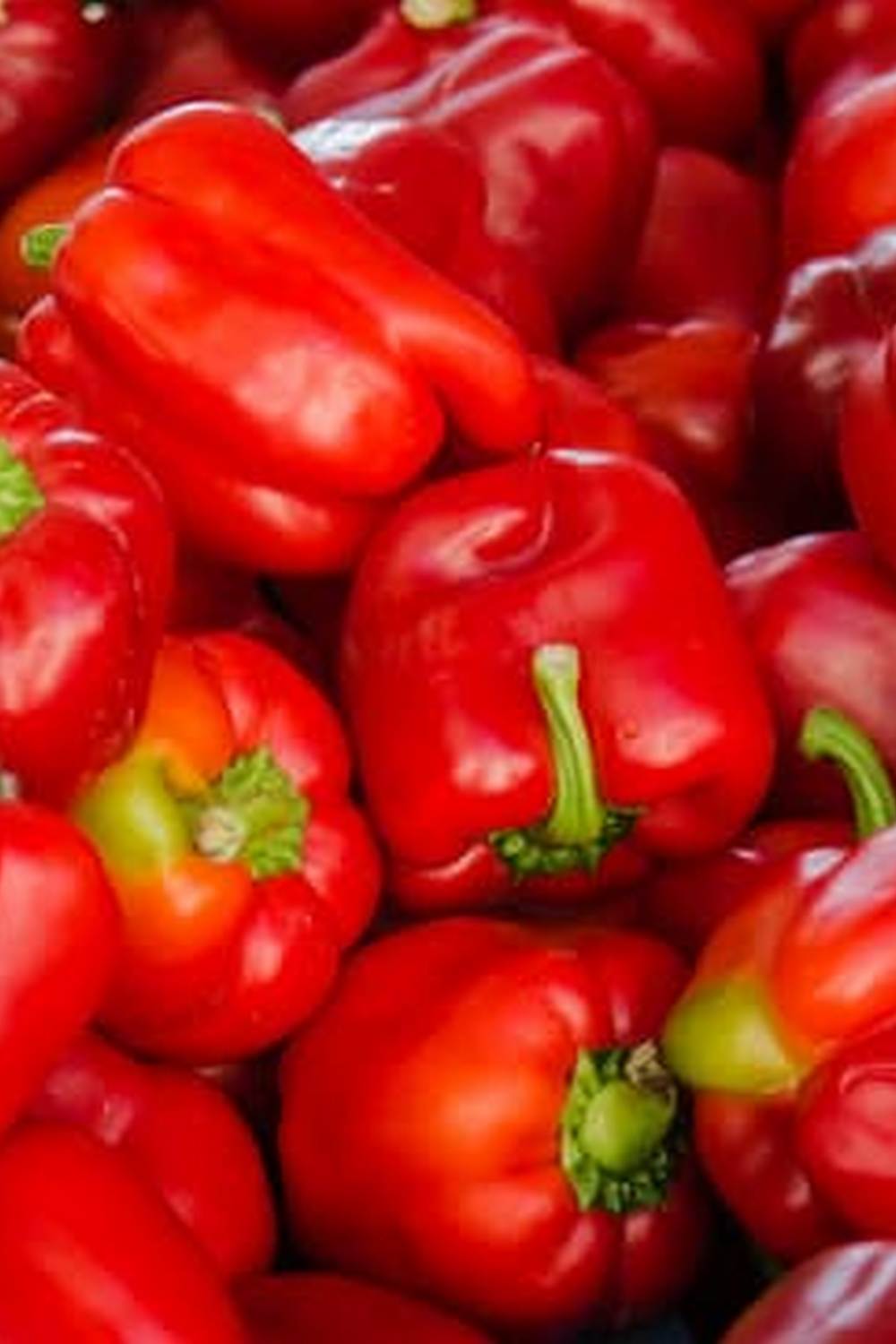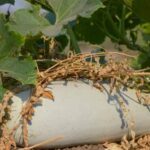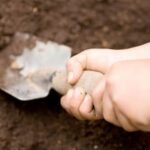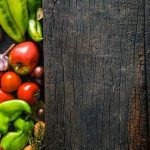Wisconsin prides itself on its rich agricultural heritage, and vegetable gardening is a beloved pastime for many residents. In this Wisconsin Vegetable Gardening Guide, we will delve into the essential information needed to cultivate a successful and fruitful garden in the Badger State. Whether you are a seasoned gardener or just starting out, this guide will provide valuable insights and tips to help you make the most of your gardening experience in Wisconsin.
From the fertile fields of the Driftless region to the bustling urban gardens of Milwaukee, Wisconsin offers a diverse landscape for growing a wide variety of vegetables. Understanding which vegetables thrive best in Wisconsin’s climate and soil conditions is crucial for a successful harvest. In this guide, we will explore the best vegetables to grow in Wisconsin and provide expert recommendations on how to maximize your garden’s potential.
Wisconsin’s unpredictable weather patterns can present challenges for vegetable gardeners, but with proper planning and preparation, you can overcome these obstacles. By learning about Wisconsin’s unique climate and soil characteristics, as well as investing in essential tools and supplies, you can set yourself up for a bountiful harvest. Stay tuned as we dive into these topics and more in our comprehensive Wisconsin Vegetable Gardening Guide.
Best Vegetables to Grow in Wisconsin
Wisconsin is a great state for vegetable gardening, with its diverse climate and soil conditions that allow for a wide variety of crops to thrive. When planning your Wisconsin vegetable garden, it’s important to choose vegetables that are well-suited to the region’s growing conditions. Some of the best vegetables to grow in Wisconsin include tomatoes, peppers, cucumbers, zucchinis, beans, and leafy greens like lettuce and spinach.
Tomatoes are a popular choice for Wisconsin gardeners because they can be grown in both containers and in-ground gardens. They require full sun and well-drained soil to thrive. Peppers, both sweet and hot varieties, also do well in Wisconsin’s warm summers. Cucumbers are another favorite among gardeners, as they are easy to grow and produce abundantly. Zucchinis are known for their prolific harvests and can be used in a variety of recipes.
In addition to these summer vegetables, cool-season crops like beans, lettuce, and spinach can be grown successfully in Wisconsin as well. These vegetables can be planted early in the spring or late summer for a fall harvest. By choosing a mix of warm-season and cool-season vegetables, you can enjoy fresh produce from your Wisconsin vegetable garden throughout the growing season.
| Vegetable | Growth Conditions |
|---|---|
| Tomatoes | Full sun, well-drained soil |
| Peppers | Warm summers |
| Cucumbers | Easy to grow |
Understanding Wisconsin’s Climate and Soil for Gardening
When it comes to successful vegetable gardening in Wisconsin, understanding the climate and soil of the region is crucial. Wisconsin’s climate is characterized by cold winters and warm summers, making it a challenging yet rewarding environment for gardeners. The state is divided into different USDA hardiness zones, ranging from zone 3 in the north to zone 5 in the south. This diversity in zones means that certain vegetables may thrive better in specific areas of Wisconsin.
To make the most of your Wisconsin vegetable garden, it’s important to know your soil type. Wisconsin soils vary from sandy loam to heavy clay, with each type having its own pros and cons for gardening. Conducting a soil test will help you determine the pH level and nutrient content of your soil, allowing you to make necessary amendments for optimal plant growth.
Here are some key considerations when it comes to understanding Wisconsin’s climate and soil for gardening:
- Choose vegetables that are well-suited for Wisconsin’s growing season and temperature fluctuations.
- Amend your soil with organic matter like compost or aged manure to improve its texture and fertility.
- Consider using raised beds or containers if your soil quality is poor or drainage is an issue.
- Be mindful of frost dates in Wisconsin to avoid planting too early or too late in the season.
By adapting your gardening practices to suit Wisconsin’s unique climate and soil conditions, you can set yourself up for a successful harvest of fresh produce from your garden.
Essential Tools and Supplies for Vegetable Gardening in Wisconsin
When it comes to vegetable gardening in Wisconsin, having the right tools and supplies can make a significant difference in the success of your garden. Here are some essential tools and supplies that every Wisconsin gardener should have:
- High-quality garden gloves: Protect your hands from thorns, sharp edges, and rough surfaces while working in the garden.
- Trowel and hand pruners: These small handheld tools are perfect for digging small holes for seedlings or cutting back plants as needed.
- Garden hose or watering can: Ensure your garden gets an adequate amount of water, especially during dry periods in Wisconsin’s climate.
In addition to tools, having the right supplies on hand is crucial for maintaining a healthy vegetable garden in Wisconsin. Here are some must-have supplies:
- Organic fertilizer: Give your plants the nutrients they need to thrive without harmful chemicals that can harm the environment.
- Mulch: Help retain soil moisture, control weeds, and regulate soil temperature by applying mulch around your plants.
- Seeds or seedlings: Whether you prefer starting from seeds or purchasing seedlings, having a variety of vegetables to plant is essential for a successful harvest.
By investing in these essential tools and supplies for vegetable gardening in Wisconsin, you’ll be better equipped to care for your plants and enjoy a bountiful harvest throughout the growing season. Remember to always follow sustainable gardening practices to protect Wisconsin’s natural environment while cultivating your own homegrown produce.
Tips for Starting Your Vegetable Garden in Wisconsin
Starting a vegetable garden in Wisconsin can be a rewarding experience, but it requires some careful planning and preparation. Here are some tips to help you get your garden off to a great start:
Choose the Right Location
Selecting the right spot for your vegetable garden is crucial for its success. Make sure the location receives at least 6-8 hours of sunlight each day and has access to water. Avoid areas with poor drainage or where water tends to pool, as this can lead to root rot and other issues.
Prepare the Soil
Before planting, it’s essential to prepare the soil properly. Test the pH level of your soil and amend it as needed to ensure it is optimal for growing vegetables. Adding organic matter, such as compost or aged manure, can help improve soil structure and fertility.
Start Small
If you’re new to gardening, consider starting with a small plot or container garden to avoid feeling overwhelmed. Choose a few easy-to-grow vegetables like tomatoes, peppers, and lettuce to begin with. As you gain experience, you can expand your garden and try growing a wider variety of crops.
By following these tips and using resources like the Wisconsin Vegetable Gardening Guide, you’ll be well on your way to a successful vegetable garden in Wisconsin. Remember that gardening is a continuous learning process, so don’t be afraid to experiment and adapt your techniques as needed. Enjoy the satisfaction of growing your own fresh produce right in your backyard.
Managing Pests and Diseases in Wisconsin Vegetable Gardens
Pests and diseases can pose a significant challenge to maintaining a thriving vegetable garden in Wisconsin. One of the most common pests that gardeners face in the state is the Japanese beetle, known for devouring leaves and flowers. To combat this pest, consider using row covers or neem oil as natural alternatives to chemical pesticides. Additionally, keeping your garden clean and free of debris can help reduce the risk of infestations.
Another common issue in Wisconsin vegetable gardens is fungal diseases like powdery mildew and blight. These diseases thrive in humid conditions, which are often present during Wisconsin summers. To prevent fungal infections, avoid overcrowding plants to promote good air circulation and consider using fungicides labeled for specific vegetables. Furthermore, mulching can help prevent soil-borne diseases by reducing contact between plants and the soil.
It’s important for Wisconsin gardeners to stay vigilant and regularly inspect their plants for signs of pests or diseases. Early detection can make it easier to address issues before they spread throughout the garden. By practicing good gardening techniques such as crop rotation, proper spacing, and watering at the base of plants, you can create an environment that is less susceptible to pests and diseases.
| Pests | Diseases |
|---|---|
| Japanese beetle | Powdery mildew |
| Cabbage worms | Blights |
| Squash bugs | Root rot |
Harvesting and Preserving Your Wisconsin Vegetable Garden Produce
Harvesting Techniques
When it comes to harvesting your vegetables in Wisconsin, timing is key. Each vegetable has its own indicators for when it’s ready to be picked. For example, tomatoes should be harvested when they are firm and fully colored, while cucumbers are best picked when they are still small and tender. Be sure to research each vegetable you’re growing to know the specific signs of ripeness.
Another important aspect of harvesting is handling the produce properly. Use sharp garden shears or a knife to cut fruits and vegetables from the plant instead of pulling them off, as this can cause damage and reduce shelf life. After harvesting, make sure to handle the produce gently to avoid bruising or crushing them.
Preservation Methods
Once you’ve harvested your fresh vegetables from your Wisconsin garden, it’s essential to preserve them properly to enjoy them throughout the year. There are several methods you can use for preserving your produce, such as canning, freezing, pickling, and dehydrating.
Canning is a popular method for preserving vegetables like tomatoes, beans, and peppers. Freezing is great for preserving items like berries, peas, and corn. Pickling works well for cucumbers, beets, and onions. Dehydrating is an excellent option for herbs and some fruits like apples or bananas. Explore different preservation techniques based on the vegetables you have grown in your Wisconsin garden.
Storing Your Harvested Produce
After preserving your harvest, proper storage is crucial to maintain the quality of your produce. Store canned items in a cool, dark place with consistent temperature levels. Frozen produce should remain in a freezer at 0 degrees Fahrenheit or lower. Pickled vegetables can be stored in a pantry or cellar with good ventilation. Dehydrated items should be kept in airtight containers away from moisture.
By following these harvesting techniques, preservation methods, and storage tips for your Wisconsin vegetable garden produce, you can savor the flavors of your hard work long after the gardening season has passed. Enjoy the fruits (and veggies) of your labor.
Connecting With Local Wisconsin Gardening Communities and Resources
When it comes to vegetable gardening in Wisconsin, connecting with local gardening communities and resources can be a valuable asset. Whether you are a beginner or an experienced gardener, being part of a community can provide you with support, knowledge sharing, and new ideas for your own garden.
One way to connect with other gardeners in Wisconsin is to join local gardening clubs or organizations. These groups often host events, workshops, and meetings where you can learn from experts and fellow enthusiasts. Additionally, you can share your own experiences and expertise with others in the community. Some popular gardening organizations in Wisconsin include the Wisconsin Master Gardener Program and the Wisconsin Vegetable Gardening Group.
Another valuable resource for Wisconsin gardeners is local farmers markets and seed exchanges. Visiting farmers markets not only allows you to purchase fresh produce but also provides an opportunity to network with local growers and gather information on what grows best in the region. Participating in seed exchanges is another great way to diversify your garden’s crops while also supporting sustainable gardening practices.
Lastly, connecting with online resources specific to Wisconsin vegetable gardening can provide you with up-to-date information and advice. Websites such as the University of Wisconsin Extension’s Horticulture Division offer a wealth of resources on planting guides, pest management, soil health, and more.
Social media platforms like Facebook groups or Instagram accounts dedicated to Wisconsin gardening can also be a source of inspiration and community engagement. By tapping into these resources, you can enrich your gardening experience and cultivate a thriving garden in the Badger State.
Conclusion and Final Thoughts on Successfully Gardening in Wisconsin
Successfully gardening in Wisconsin requires careful consideration of the unique climate and soil conditions of the state. By following the advice and recommendations outlined in this Wisconsin Vegetable Gardening Guide, gardeners can set themselves up for a bountiful harvest. From selecting the best vegetables to understanding how to manage pests and diseases, each step plays a crucial role in the success of a Wisconsin vegetable garden.
One important aspect of gardening in Wisconsin is taking advantage of local resources and connecting with gardening communities. Whether it’s joining a community garden, attending workshops, or simply networking with fellow gardeners, these connections can provide valuable knowledge and support. Local resources such as extension services and gardening clubs can also offer guidance specific to Wisconsin’s growing conditions.
In conclusion, by utilizing the information provided in this guide and staying connected with local resources, gardeners in Wisconsin can cultivate thriving vegetable gardens. The satisfaction of harvesting homegrown produce and enjoying fresh flavors from the garden makes all the effort worthwhile. With dedication, patience, and a bit of Wisconsin know-how, anyone can experience the joys of successful vegetable gardening in this beautiful state.
Frequently Asked Questions
What Vegetables Are Easiest to Grow in Wisconsin?
Some of the easiest vegetables to grow in Wisconsin include tomatoes, green beans, zucchini, and cucumbers. These vegetables are relatively low-maintenance and thrive in Wisconsin’s climate and soil conditions.
What Order Should I Plant My Vegetable Garden?
When planting a vegetable garden, it’s important to consider the needs of each plant. Generally, it’s recommended to plant tall or trellised crops like corn or tomatoes at the back of the garden to prevent shading other plants. Low-growing plants like lettuce or radishes can be planted in front.
What Is the Best Month to Start a Vegetable Garden?
The best month to start a vegetable garden in Wisconsin is typically around May when the threat of frost has passed and the soil has warmed up enough for seeds to germinate. Starting your garden in May allows for a longer growing season before fall frosts arrive.

If you’re looking to get into vegetable gardening, or are just looking for some tips on how to make your current garden better, then you’ve come to the right place! My name is Ethel and I have been gardening for years. In this blog, I’m going to share with you some of my best tips on how to create a successful vegetable garden.





